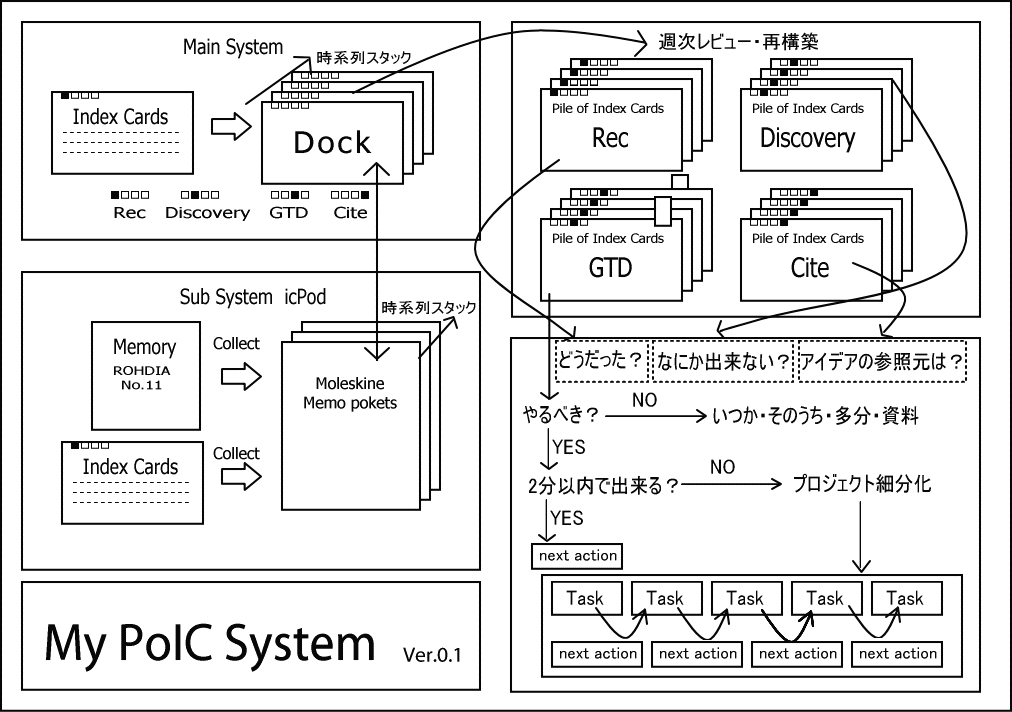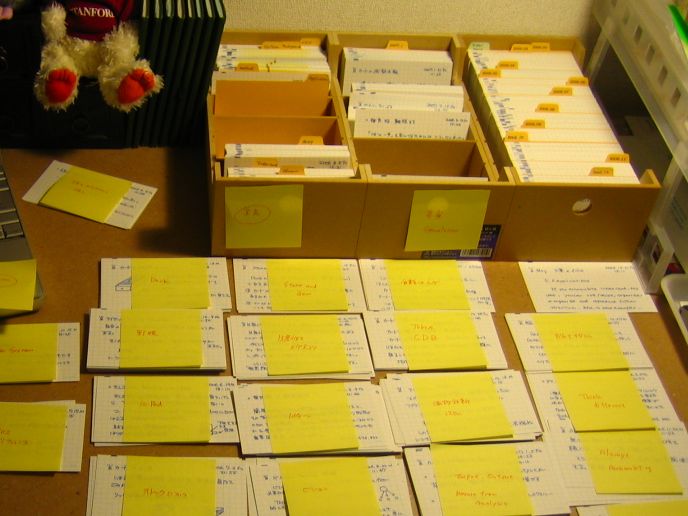reply to u/stjeromeslibido at https://www.reddit.com/r/antinet/comments/10lqfsn/comment/j63y2k9/?utm_source=reddit&utm_medium=web2x&context=3
Every card has holes pre-punched into it in exactly the same place (see the photo in the original post at the top) so that one might put a knitting needle (or other thin instrument) through the whole deck in each of the positions. Then one should decide on what each hole's meaning will be by position.
As an example, imagine you're using your cards in a rolodex fashion and you want to distinguish the six categories: family, friends, service providers, neighbors, co-workers, and organizations/businesses. For family members you cut/remove the additional paper between the first hole (representing "family") and the edge of the paper. You do the same thing for all the other cards based on their respective categories. So, for example, your brother Joe who lives across the street from you and works with you at the office in the family business would have cuts removed for positions 1, 4, and 5. For an entity that fits all six categories, cuts would be made such that the sheet would no longer stay in u/I-love-teal (the original poster's) six ring binder notebook.
At the end of the year you want to send Christmas cards to your friends, family and neighbors, so you put the knitting needles into position 1 and pull up separating your family out, then you repeat for positions 4 and 5 until you have your full list. (Pro tip: you probably wouldn't want to pull them out of the deck completely, but might rather pull them up and set them at a 90 degree angle thus preventing you from needing to do the work of refiling them all in a particular order.)
Obviously if you have multi-row edge punches or dozens of edge notches you can discern a lot more categories or data types using basic logic. Just abstract this to your particular note card system. Herman Hollerith used this in early versions of the U.S. Census in the late 1800s and it and variations were used heavily in early computer programming applications.
A variation of this sort of trick can also be done by coloring in (or not) the edges of parts of your cards as well. See for example the general suggestions in these photos which help to layout the idea of the "Pile of Index Card" system used back in 2006 with respect to Getting Things Done (GTD) philosophy:
On my mathematics specific notes which I generally put on graph paper cards, I use colored edge "notches" like these to represent broad categories like theorems, proofs, definitions, corollaries, etc. or method of proof (induction, direct, contradiction, contraposition, construction, exhaustion, probabilistic, combinatorial, etc.) This makes finding specific cards a bit easier as I tip through various sections.
A historian might use colored edges to visually label dates by decades or centuries depending on the timespan of their studies. The uses can be endless and can be specific to your field of study or needs.
Some might also attach the idea of tags/categories to the colors of their cards, so you might use white cards for ideas which are your own, yellow cards which are quotes of others' material, blue cards which represent synopses of other's ideas, etc. One might also profitably use a multi-pen with different colored inks to represent these sorts of meta-data as well.
The variations are endless...




